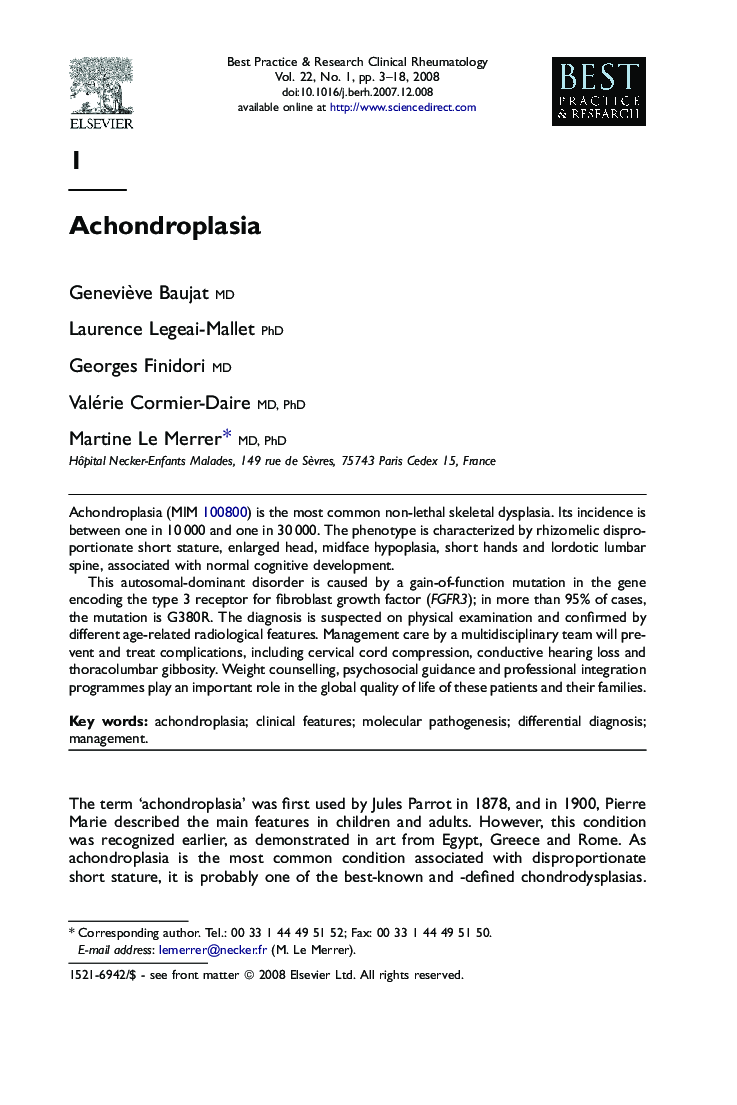| Article ID | Journal | Published Year | Pages | File Type |
|---|---|---|---|---|
| 3343578 | Best Practice & Research Clinical Rheumatology | 2008 | 16 Pages |
Achondroplasia (MIM 100800) is the most common non-lethal skeletal dysplasia. Its incidence is between one in 10 000 and one in 30 000. The phenotype is characterized by rhizomelic disproportionate short stature, enlarged head, midface hypoplasia, short hands and lordotic lumbar spine, associated with normal cognitive development.This autosomal-dominant disorder is caused by a gain-of-function mutation in the gene encoding the type 3 receptor for fibroblast growth factor (FGFR3); in more than 95% of cases, the mutation is G380R. The diagnosis is suspected on physical examination and confirmed by different age-related radiological features. Management care by a multidisciplinary team will prevent and treat complications, including cervical cord compression, conductive hearing loss and thoracolumbar gibbosity. Weight counselling, psychosocial guidance and professional integration programmes play an important role in the global quality of life of these patients and their families.
